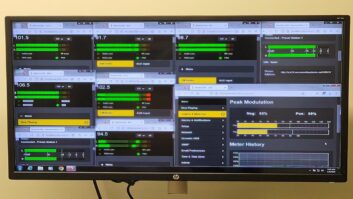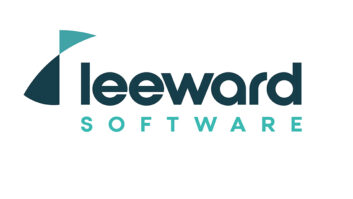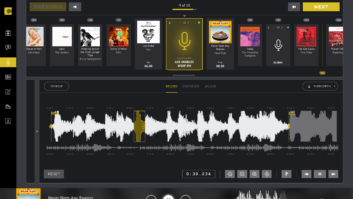Navigauge IQ Monitor
Nov 1, 2004 12:00 PM, By Steve Varga
It has been nearly 85 years since the birth of commercial radio broadcasting by KDKA in Pittsburgh and a whole lot has changed�or then again, maybe not. Radio broadcast technology has evolved, content has progressed with the times and radio personalities have pushed the limits of what is considered acceptable over the pubic airwaves, but for the past 50 years, radio has measured who is listening and what they are listening to the old-fashioned way. The same paper diary methods of the 1950s are still in use today with the same weaknesses and inaccuracies that come from relying on human recollection.
In-car listening is the most frequent of all radio listening. But to monitor this with the paper reporting method, data must be logged while driving, or the driver must recall the radio stations he listened to and for how long during the drive. The latter is nearly impossible with any level of accuracy or granularity. Listeners that are inclined to bounce around the radio dial during commercial breaks or when an unfavorable song catches their ears are nearly impossible to notate.

The functional components of the IQ Monitor.
Obtaining such accuracy is not normally a life-and-death situation, unless the listener is trying to make entries into his diary while navigating through rush-hour traffic. However, the data that results from this form of collection drives radio station programming ratings, and ultimately the advertising dollars that can be commanded for certain spots.
With $20 billion spent annually on radio advertising in the U.S., there are significant decisions being made based on 50-year-old methods of ratings data collection.
Technical innovation is changing listener-data collection, and Navigauge has developed and deployed a monitoring, data transmission, storage and Web-based reporting system.
Technology and methodology
Navigauge’s patent-pending technology collects data to develop radio ratings and track mobile behavior and consumer retail patterns. Doing this without significantly affecting a vehicle’s audio system components or requiring the radio broadcast infrastructure to be modified on a nationwide basis is the purpose of Navigauge’s IQ Monitor and its Automated Audience Reporting Management System (AARMS).
The company’s wireless-based technology yields real-time data that reveals where drivers are, what they are listening to and for how long. This measurement system delivers a range of in-vehicle data including:
- radio listening behavior, such as channel changes and station duration, which are automatically and unobtrusively captured and time-stamped without driver interaction or distraction;
- vehicle location and travel patterns, monitored via GPS;
- associated quantitative and qualitative demographic information about the drivers making these decisions.
Navigauge’s means of pseudo-passively monitoring radio usage, combining it with GPS location, transmitting the resulting data on a real-time basis and providing actionable Web-based reporting is the result of research and development over the past three years. Six substantive goals were established to do this.
- The panelist/driver must not be distracted or influenced by the need to do anything out of the ordinary during monitoring.
- The monitoring device installation must not require internal modifications to audio components or changes to the commercial broadcast infrastructure.
- The monitoring device installation must be fast and inconspicuous.
- The collected listening and location data must be available on a real-time basis with no action required by the panelist/driver to upload data.
- The received data must be securely stored and then presented in an intuitive actionable manner via Internet-based reports that provide immediate value to broadcasters, advertisers, retailers, branded product companies, ad agencies and media buyers.
- The panel created must adhere to accepted industry standards of demographic probability sampling within a given region.
The hardware
The IQ Monitor is the size of a VHS videotape. It is connected to the automobile’s audio system at the receive-antenna input and the speaker outputs. By sequentially injecting a defined, low-level RF-modulated narrow-band tone and then monitoring it after it has been demodulated at the speaker outputs, the IQ Monitor can discern the tuned station quickly and accurately. Triggered by the short silence that is inherent in every car radio when a listener changes stations, the IQ Monitor begins a sequential scan of each of the known commercial AM and FM carrier frequencies injecting a narrow-band tone at each carrier frequency and then listening for it. If the tone is not detected, the IQ Monitor moves to the next carrier frequency and repeats the inject-and-detect process until the tone is detected.
The IQ Monitor learns which stations are most often tuned to by a listener, which reduces inject-and-detect scanning time to a few of seconds. The tone injected is milliseconds in duration and virtually undetectable by the listener. By developing an unobtrusive localized monitoring schema, Navigauge has avoided the need to broadcast signature tones over the air.
Combining radio listener data with the physical location of the panelist is accomplished with an integrated Global Positioning System (GPS) receiver within the IQ Monitor. The real-time physical location of a panelist as it relates radio listening habits to outdoor advertising, retail locations and shopping patterns provides a new level of media and market intelligence.
The IQ Monitor sends the collected data to the Navigauge Network Operations Center (NOC) via any number of wide-area wireless data networks. Depending on the network architecture used, the data transmissions can occur at set trigger points or continuously. If the IQ Monitor is out of network coverage it will buffer the data until it comes back into coverage. This process is fully automatic and internally governed by the IQ Monitor. The networks of choice include data-specific narrow-band and digital cellular providers, as well as low Earth-orbit satellites (LEOS) in rural areas that do not have terrestrial network coverage. Like the GPS receiver, the network-specific wireless data transceiver is embedded in the IQ Monitor and operates as a fully integrated subsystem of the monitor. The transceiver also provides new opportunities for sending messages, data or new software downloads to the panelist vehicle if desired.
By combining an equal-probability-based, randomly generated sample representative of the population being measured with continuous, automated data collection, Navigauge provides its clients real, not anecdotal, data. As noted previously, the IQ Monitor sends its data to the Navigauge NOC where it is securely stored. On a continual basis, terabytes of data feed the calculations that drive the statistical models behind the reports that the company’s Automated Audience Reporting Management System (AARMS) produces. AARMS is a Dot-net-based application that allows the configuration of any number of reports that a broadcaster, retailer or media buyer might wish to define. The end result is highly available, up-to-the-minute reporting that provides the basis for informed programming, media spending and placement decisions.
As with all companies in today’s highly competitive service-oriented business climate, delivering products and services that improve the customer experience, capture market-share and significantly reduce churn will prove invaluable. This is no less true in the advertising and media markets of today.
Varga is the chief technology officer of Navigauge.












